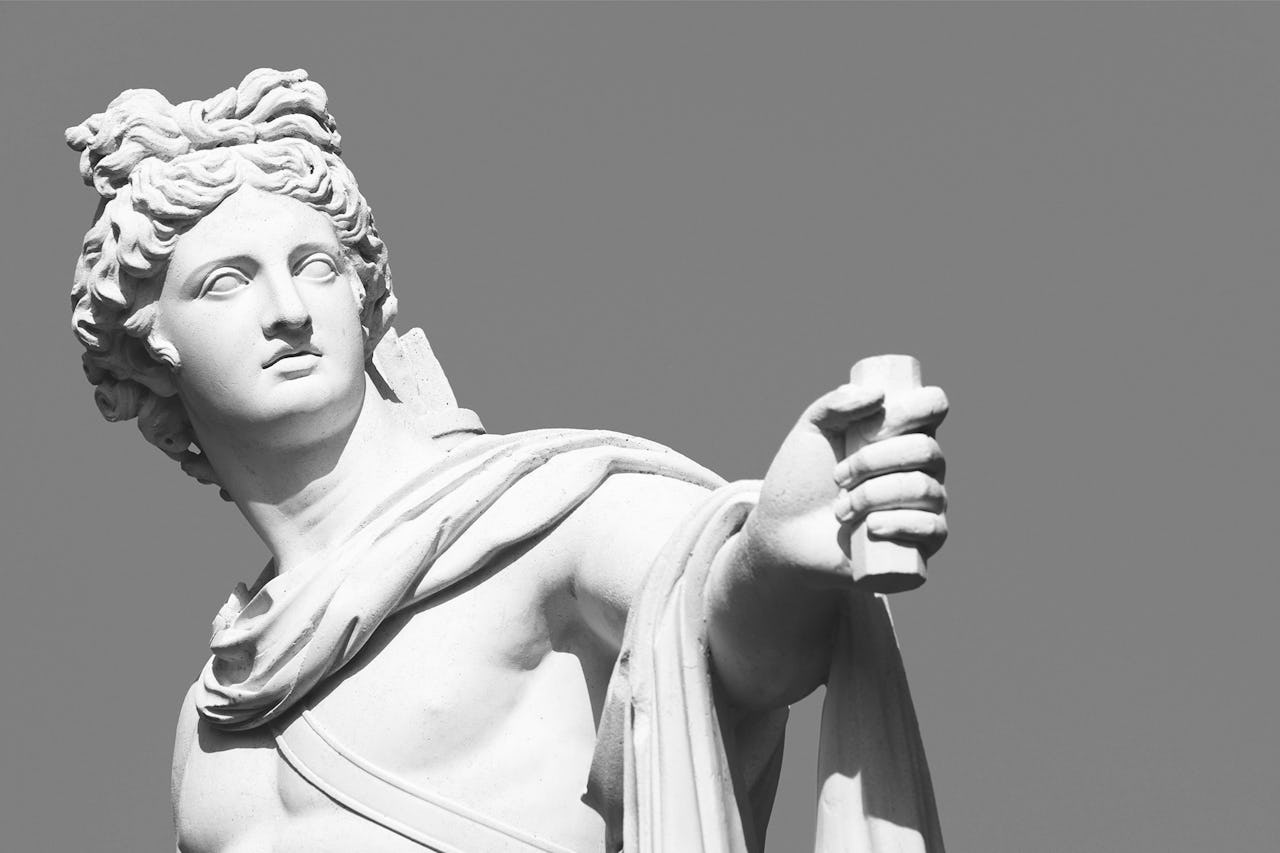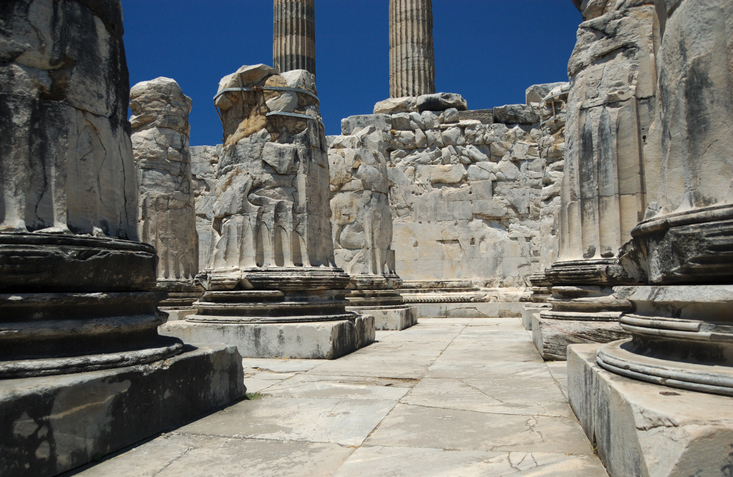Didyma, once a sacred site of prophecy and awe, still hums with the echoes of a god who spoke in riddles and fire, and here, on the sun-drenched Ionian coast of western Turkey, between the waves and the ruins, stands one of antiquity’s most haunting temples — the Temple of Apollo.
Table of Contents

Who Was Apollo?
To the ancient Greeks, Apollo was more than a sun god. He embodied reason, harmony, healing, music, and most importantly prophecy. When people sought answers from the divine, they didn’t look within. They came to Apollo’s oracles. Didyma was one of them. It wasn’t a city, but a sacred sanctuary. Pilgrims traveled from all corners of the Greek world to ask their questions. The answers, spoken by a priestess and interpreted by hereditary priests called the Branchidae, were believed to carry the voice of the god himself.
.jpg)
Didyma: An Oracle Without a City
Unlike Delphi or Ephesus, Didyma was not a city but a stand-alone sanctuary, linked by a 17 kilometer Sacred Way to Miletus, one of the great Ionian cities. The name “Didyma” likely refers to “twins” Apollo and Artemis and its oracle was considered older than even Delphi’s.
Herodotus mentions its significance as early as the 6th century BCE. Pilgrims came from across the Greek world, underwent purification rituals, and offered gifts before posing questions to a priestess. Her trance-born replies were interpreted by the Branchidae, a hereditary priesthood said to descend from a mortal beloved by Apollo.
.jpg)
The Architecture: An Unfinished Masterpiece
After the original sanctuary was destroyed by the Persians in 494 BCE, construction of a grand new temple began in the late 4th century BCE under Hellenistic rule. The scale was unprecedented so vast and complex that the project was never completed, despite centuries of effort.
What set the Temple of Apollo at Didyma apart:
It measured 109 by 51 meters, nearly the size of a football field.
Surrounded by 120 Ionic columns, each standing 19.5 meters (64 feet) tall.

Featured a hypaethral (open-air) inner courtyard enclosed by high walls.
At its heart: a sacred spring, a laurel tree, and a naiskos (inner shrine).
Hidden tunnels and staircases allowed priests to move unseen, adding to the temple’s ritual mystery.
The Didymaion wasn’t just designed for worship it was built to evoke wonder. Visitors entered gradually, climbing steps, turning corners, and descending into the sanctuary. The architecture guided them physically and symbolically closer to the divine.

Why It Was Never Completed
There are several reasons why Western Anatolia‘s Temple of Apollo at Didyma was left incomplete:
Size and Complexity: The project was enormous. Few temples in the Greek world approached its scale or level of detail.
Political Turmoil: Control of the region shifted between different Hellenistic kingdoms and later the Roman Empire. Each transition affected funding and priorities.
.jpg)
Religious Changes: As Christianity spread in the late Roman period, interest in pagan temples declined, and the oracle was eventually silenced.
Natural Disasters: Earthquakes frequently struck the region, damaging parts of the structure and making rebuilding efforts difficult.
In a way, the unfinished state of the temple enhances its mystery. It stands today not as a polished museum piece but as a raw and tangible connection to the hopes, visions, and failures of those who built it.

What Does This Have to Do with The Other Tour?
It means everything.
Because at The Other Tour, we’re not in the business of showing you what to see.
We’re here to help you notice what most people miss.
We believe in curiosity over convenience, in depth over spectacle, and in the kind of travel that lingers long after you’ve left.
Didyma doesn’t entertain. It doesn’t offer easy answers.
It invites you to slow down. To listen. To feel the weight of time without needing to explain it.
If you’re drawn to silence over selfies, to questions over commentary, to places that speak in whispers instead of slogans then Didyma isn’t just a ruin.
It’s a mirror. A moment.
And the kind of place we return to, again and again.







